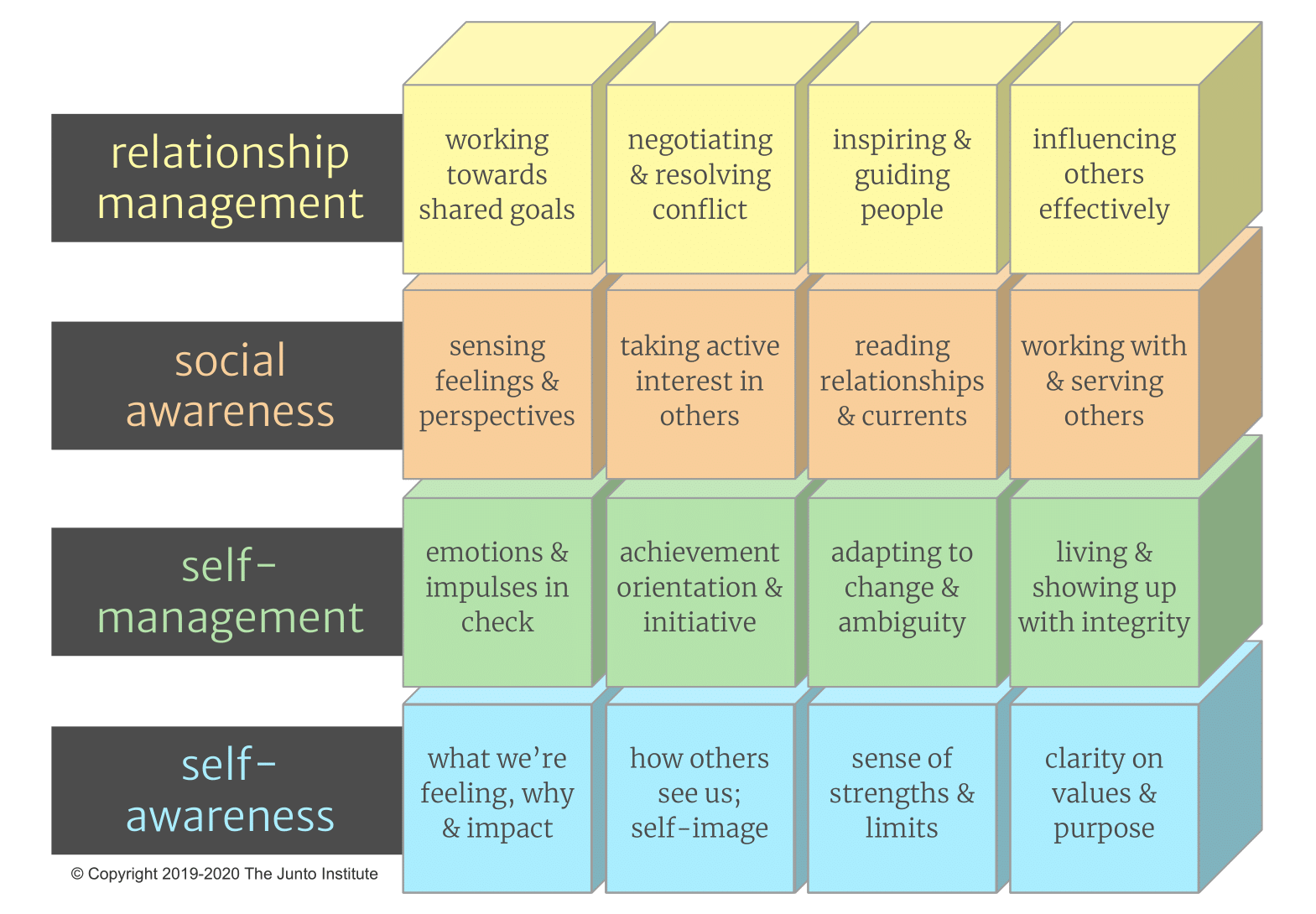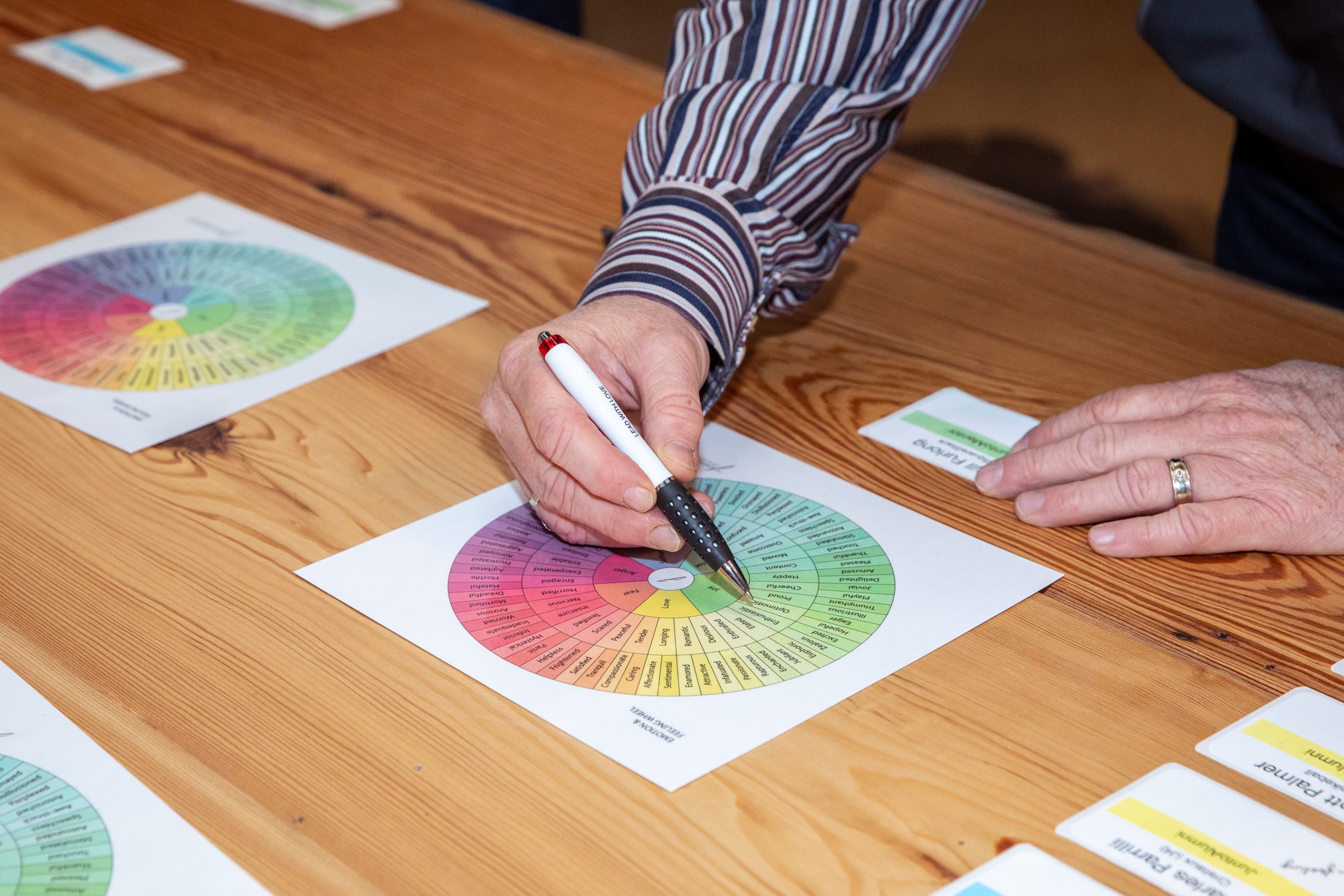THE JUNTO EMOTION WHEEL
What it is, why we designed it, and how it can be used

The Junto Emotion Wheel is a tool that helps you build self-awareness and empathy for others. As depicted in our Building Blocks of Emotionally Intelligent Leadership, self-awareness is the foundation: the ability to recognize your own emotions and mood, your thoughts about them, and how those thoughts are connected with your behavior.
None of this can occur unless you also have the ability to label your feelings. And that’s where the Junto Emotion Wheel helps. Each wedge represents a core human emotion, like Joy or Fear, and within that wedge are related ones. So while you may be in an overall “good mood” (i.e.: Joy or Love), the more specific words allow you to identify the nuances and details of that state of being (i.e.: Delighted or Tender).


At Junto, we use the Wheel to open up many of our sessions and internal meetings. It creates a moment to check-in with oneself and also to help build empathy for others. Most of our member companies use the Wheel in 1:1 and group meetings, team huddles, company-wide town halls, and more. In addition to check-ins, they use the Wheel as icebreakers in interviews, to start and close hard conversations, and to open up discussions on mental health.
Think about how you’re feeling right now or how you’ve been feeling recently, and select one or more of the core emotions. From there, follow the color wedges and choose related words in the middle and outer sections that may better reflect how you’re feeling. Think about why you’re feeling those emotions; take time to reflect or journal. To build your self-awareness over time, use the wheel at different moments in a day, at different places you spend time, and when you are with different people.


When you’re with others, have each person share their emotions and, only if they choose, the reasons. Create a safe and trusting environment by not requiring people to participate; if anyone is uncomfortable, allow them to “pass.” Listen intently to each person, watch their non-verbal expressions, and try to not probe deeper (let each person share only what they want). Emotions can’t be debated, argued, or refuted…they are personal to each of us, biologically and psychologically. When done well, this exercise builds empathy by helping us understand and relate with others.